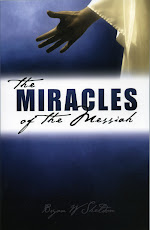The Mosaic code with its commandments and judgments was designed, among other things, to be a finger-post to point the nation of Israel Israel Israel
If the Law was added until the seed came as Paul said, then this means that the Law had a limited duration. Just as it had a point of origin on Mount Sinai, so also it had a point of termination—Mount Calvary . ‘Seed’ is used as a name for Christ, echoing Paul’s earlier identification. “Now to Abraham and his Seed were the promises made. He does not say, “And to seeds,” as of many, but as of one, “And to your Seed,” who is Christ”. (Gal. 3:16) So the age of the Law is over. This truth is a part of Paul’s theology. The texts, “you are not under law”, (Rom. 6:14) and “you … have become dead to the law through the body of Christ”. (Rom. 7:4) encapsulate his teaching on the subject. School is out – Messiah has come – childish things are to be put away. What this means is: “Christ is the end of the law for righteousness to everyone who believes”. (Rom. 10:4) There was nothing wrong with the Law. The law was “holy, and the commandment holy and just and good”. (Rom. 7:12) But salvation could not come by the Law, because no-one could keep it.
Again, I repeat, the age of Law is over. So Paul interpreted the law eschatologically in terms of (i) its fulfillment and (ii) its cancellation, in the Messianic mission of Jesus. The Messiah “wiped out the handwriting of requirements that was against us, which was contrary to us”. He took “it out of the way, having nailed it to the cross”. (Col
This section of Galatians is brim full of this idea that Christ’s work on the cross brought an end to the Mosaic Law. Words like ‘until’; ‘before’; ‘no longer’; ‘formerly’; ‘but now’. Things changed with the coming of the Messiah and His death by crucifixion. To repeat, “Christ is the end of the law for righteousness to everyone who believes”. (Rom. 10:4)
While the Abrahamic covenant is eternal, the Mosaic covenant was for a particular purpose and ceased when that purpose matured.
More Next Time:






No comments:
Post a Comment